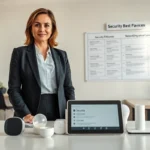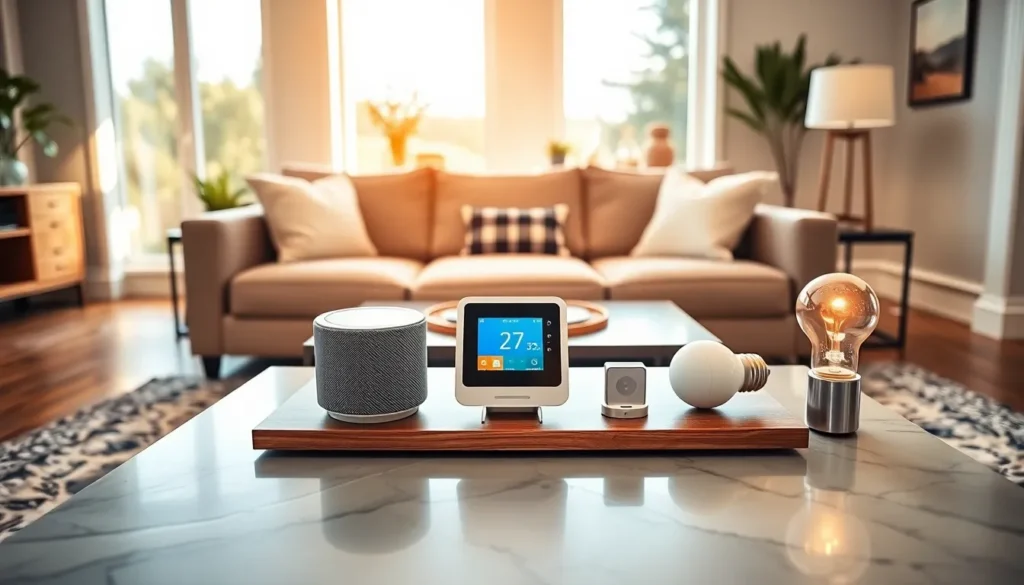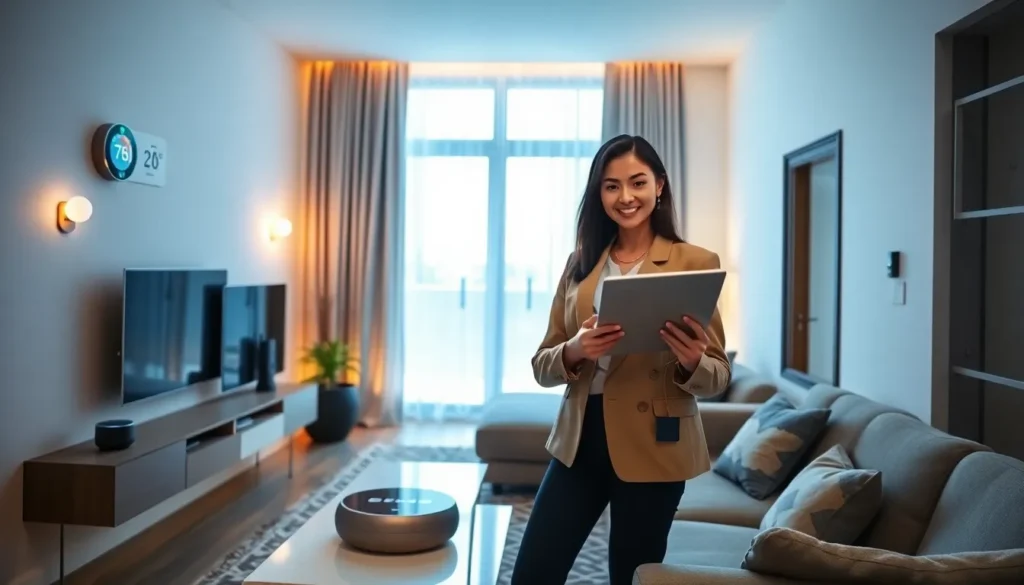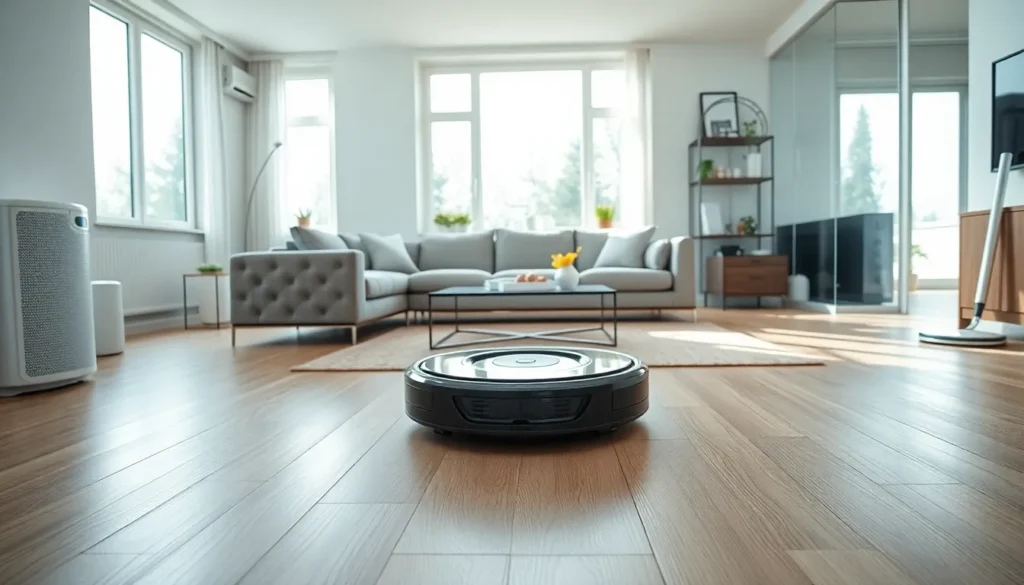Imagine a world where your home knows you better than your best friend. Smart home alerts are here to turn that dream into reality. From reminding you to lock the door to notifying you when the laundry’s done, these nifty little notifications keep you in the loop without the need for a crystal ball.
Overview of Smart Home Alerts
Smart home alerts play an essential role in improving the efficiency of daily household activities. These notifications keep homeowners informed about various aspects of their home environment. Users receive real-time updates on security issues, such as door status or motion detection. Alerts can also serve as helpful reminders for routine tasks, like watering plants or taking out the trash.
Smart home devices leverage various sensors to monitor changes and trigger alerts. Temperature sensors notify users when their home reaches an uncomfortable level. Smoke detectors send immediate warnings if smoke is detected, enhancing safety.
Smart alerts can be customized for individual preferences. Homeowners can choose to receive alerts via smartphone notifications, text messages, or email. Such flexibility ensures that notifications reach users in a timely manner. Integration with virtual assistants enables voice alerts, providing hands-free updates when needed.
Home automation systems enhance alert functionality by connecting with multiple devices. For instance, if a smart doorbell detects motion, it can concurrently alert the homeowner and begin recording video. This immediate response helps increase home security.
Further, energy consumption alerts are valuable for promoting efficiency. Homeowners receive notifications when energy usage exceeds pre-defined thresholds. Consequently, this awareness promotes strategies for reducing unnecessary expenses.
Smart home alerts transform traditional living spaces into more interactive environments. They empower users with insights that enhance convenience, security, and efficiency. By utilizing these alerts effectively, homeowners can create a responsive and user-friendly home atmosphere.
Types of Smart Home Alerts
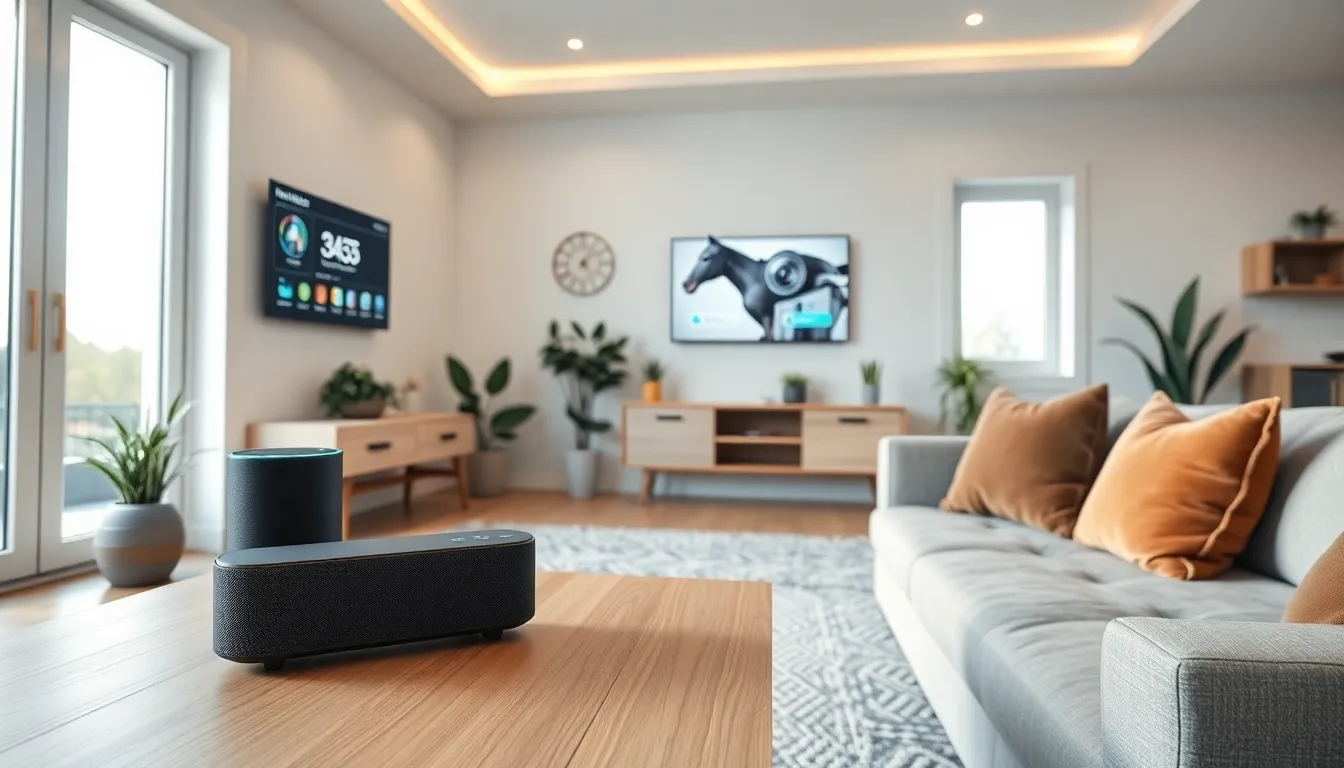
Smart home alerts fall into several categories, enhancing safety, comfort, and efficiency within the home. These alerts keep homeowners engaged with their environment, providing essential information in real-time.
Security Alerts
Security alerts notify homeowners about potential threats. Smart cameras send notifications when they detect motion, allowing users to view the footage instantly. Additionally, door sensors trigger alerts when doors open or close unexpectedly. Homeowners can customize these notifications for immediate response, ensuring maximum security. Alerts from smoke detectors provide immediate warnings, helping to prevent dangerous situations. The integration of smart doorbells enhances security further, capturing video and notifying users when someone approaches the home.
Environmental Alerts
Environmental alerts monitor living conditions for overall comfort. Temperature sensors detect extreme heat or cold, enabling users to adjust their thermostats remotely. Humidity levels are also tracked, ensuring that certain areas of the home maintain suitable conditions. Water leak detectors alert homeowners to potential leaks, preventing damage and costly repairs. Air quality sensors monitor pollutants, sending notifications when air quality dips below acceptable levels. These alerts empower users to take proactive measures to maintain a healthy living environment.
Health Alerts
Health alerts focus on monitoring wellness within the home. Smart devices, such as pill dispensers, notify users when it’s time to take medication, ensuring adherence to health regimens. Wearable devices track vital signs, sending alerts if any anomalies occur. Moreover, fitness trackers may provide reminders to promote physical activity throughout the day. Homeowners can integrate these alerts with virtual assistants, enabling hands-free interaction and updates. These health-focused notifications play a crucial role in maintaining a safe and healthy atmosphere.
Benefits of Using Smart Home Alerts
Smart home alerts offer significant advantages in daily life. Homeowners gain timely notifications for essential tasks, such as locking doors or checking appliances. This added convenience enhances the intuitive nature of the home.
Alerts improve household efficiency by keeping everyone informed. Real-time updates inform users about security issues, like door status or unusual motion, enhancing peace of mind. Routine task reminders, such as watering plants or taking out the trash, ensure that nothing is overlooked.
Utilization of various sensors enhances alert functionality. Temperature sensors notify users of unsafe conditions, while smoke detectors deliver immediate safety warnings. Customizable alerts cater to individual preferences, allowing notifications to arrive via smartphone, text, or email.
Integration with virtual assistants provides the convenience of hands-free voice alerts. Home automation systems link multiple devices, enhancing communication between them. For instance, a smart doorbell alerts homeowners and records video upon detecting movement, enhancing security measures.
Energy consumption alerts promote awareness regarding usage levels. Users receive notifications when consumption exceeds predetermined limits, encouraging proactive strategies to reduce unnecessary costs.
Smart home alerts facilitate the transformation of traditional living spaces into interactive environments. Homeowners benefit from valuable insights that prioritize convenience, security, and efficiency. Ultimately, these alerts create a user-friendly atmosphere, allowing for a more responsive home.
Categories of smart home alerts include security alerts covering potential threats and environmental alerts monitoring living conditions. Health alerts focus on wellness reminders, ensuring users maintain their health routines. Engaging with these alerts enhances safety, comfort, and efficiency throughout the home.
Setting Up Smart Home Alerts
Setting up smart home alerts enhances home automation by ensuring timely notifications. Individuals can create a seamless experience by selecting appropriate devices.
Choosing the Right Devices
Selecting the right devices is crucial for effective smart home alerts. Security cameras provide real-time monitoring and alerts for unusual activity. Smart door sensors notify users when doors open unexpectedly, enhancing safety. Environmental sensors track temperature, humidity, and air quality, pushing alerts when conditions change significantly. Water leak detectors protect homes from costly damage by sending alerts immediately. Each device should integrate smoothly with existing home automations to maximize functionality.
Configuring Notifications
Configuring notifications allows homeowners to tailor alerts to their preferences. Users can choose to receive alerts via smartphone apps, text messages, or emails. Customizable settings ensure receiving notifications only for important events rather than every minor activity. Notifications can also be prioritized based on urgency, with security alerts taking precedence over routine reminders. Voice assistants further enhance efficiency by offering hands-free notification options, ensuring users stay informed with minimal effort.
Challenges and Considerations
Smart home alerts present various challenges that homeowners must address. Security concerns arise with the increasing number of interconnected devices. Unauthorized access to systems or data can compromise privacy. Measures must be taken to enhance security, such as using strong passwords and keeping software updated.
Connectivity issues can disrupt alert reliability. Homes with weak Wi-Fi signals may experience delayed notifications or missed alerts. To mitigate this, homeowners might need to invest in range extenders or mesh networks to improve coverage.
User fatigue poses another challenge. Receiving excessive notifications can lead to desensitization, making individuals less likely to respond to important alerts. Customization of alert settings allows homeowners to prioritize notifications and reduce unnecessary updates.
Reliance on technology may also create vulnerabilities. If a smart home device fails, households can be left without crucial alerts. Regular maintenance and checks on devices help minimize these risks and ensure reliability.
Installation cost cannot be overlooked. Some homeowners face high initial expenses when implementing smart home devices and systems. Budget considerations often determine which devices to prioritize and integrate into the home.
Lastly, determining the best combination of alerts proves essential for achieving efficiency. Smart home systems need precise calibration to function effectively together. Identifying the best alerts allows homeowners to tailor their systems to meet specific needs and preferences, enhancing the overall smart home experience.
Being aware of these challenges enables homeowners to navigate the complexities of smart home alerts. Proactive management of security, connectivity, user fatigue, and costs improves the efficiency and effectiveness of smart home systems.
Smart home alerts represent a significant advancement in home automation. They empower homeowners to stay informed about their living environment while enhancing convenience and security. By tailoring notifications to individual needs and preferences, users can effectively manage daily tasks and monitor their home’s safety.
Despite the challenges that come with implementing these systems, the benefits far outweigh the drawbacks. With careful selection of devices and proper customization of alerts, homeowners can create a responsive and intuitive living space. As technology continues to evolve, smart home alerts will undoubtedly play an essential role in shaping the future of home management.







